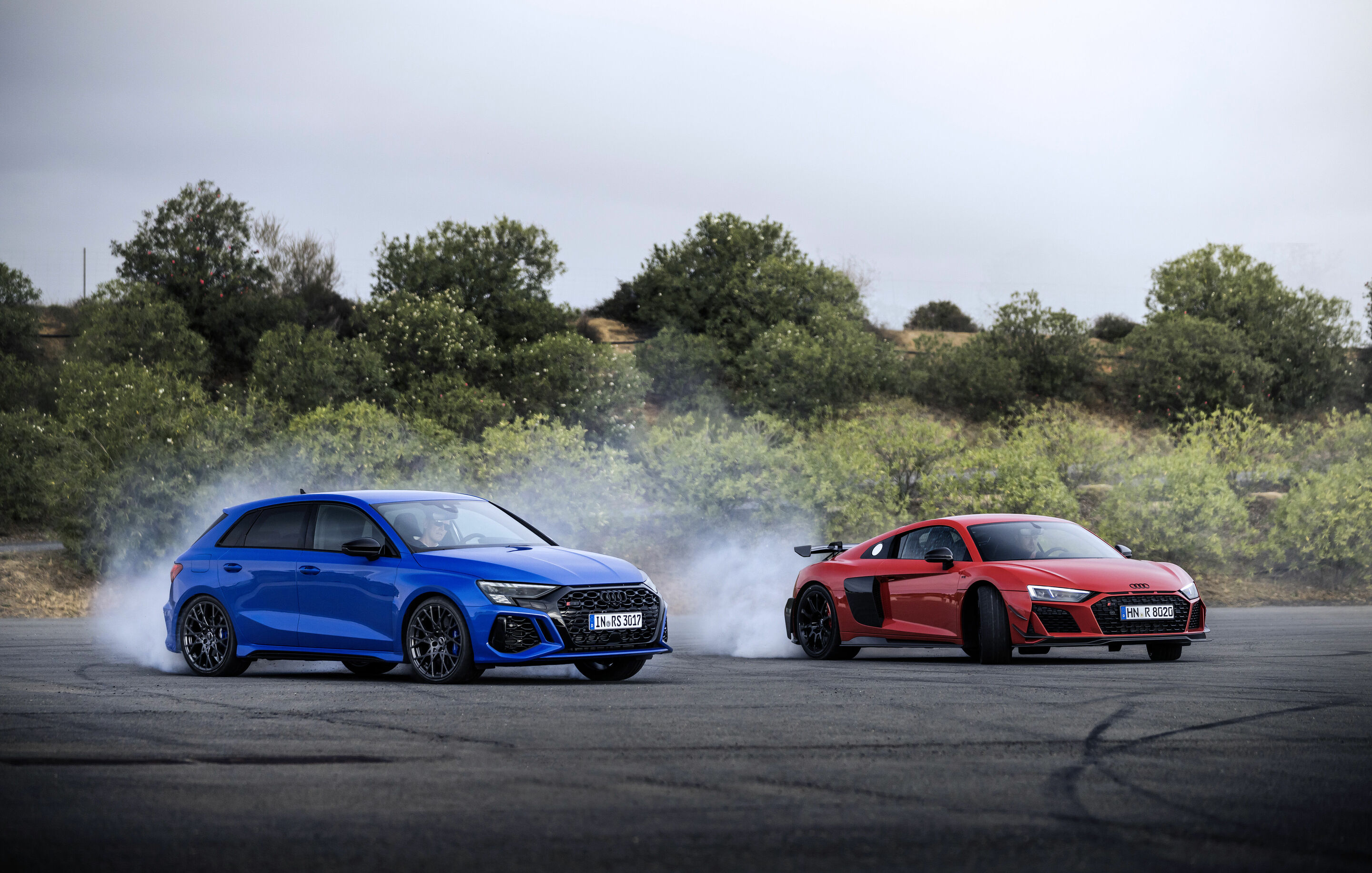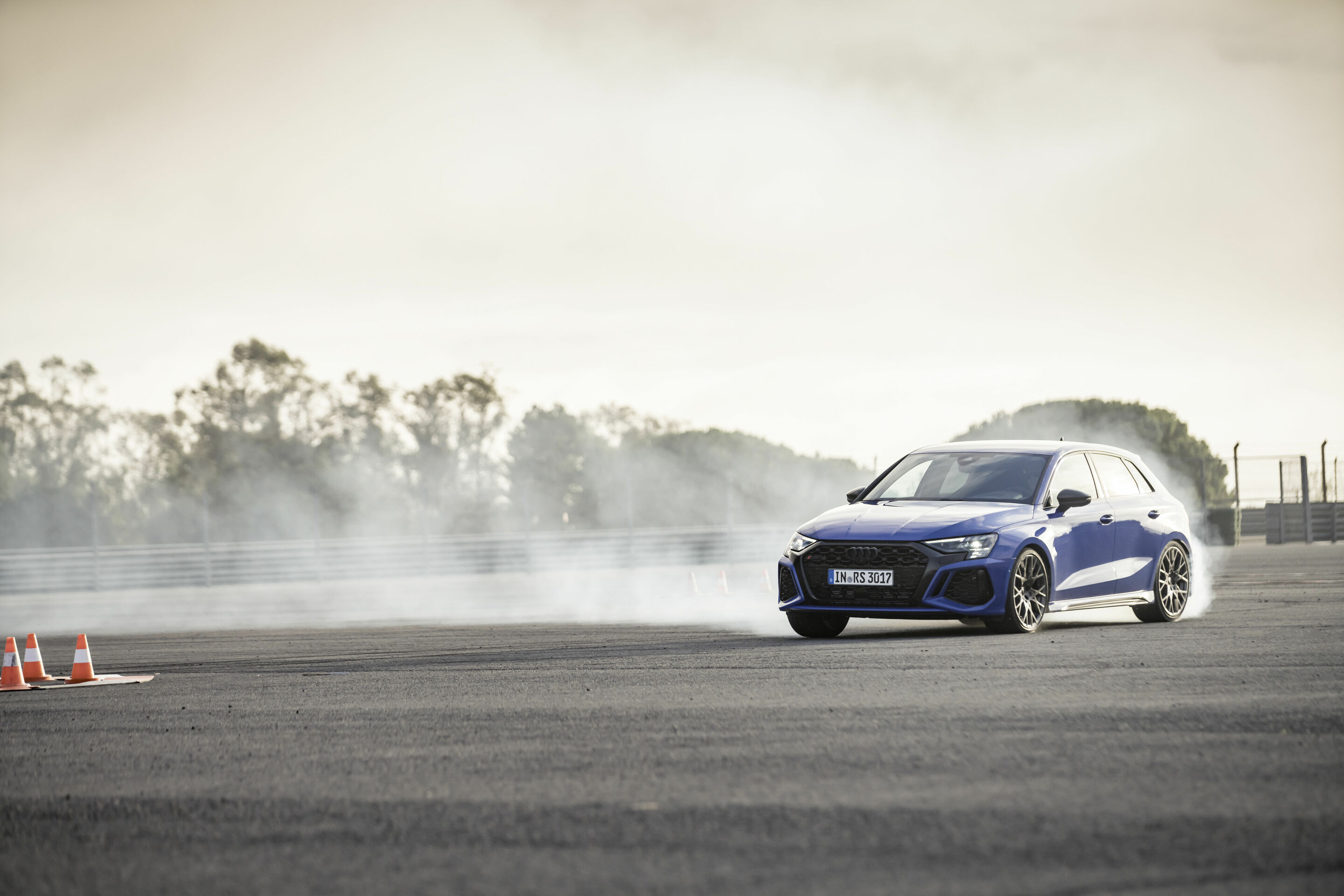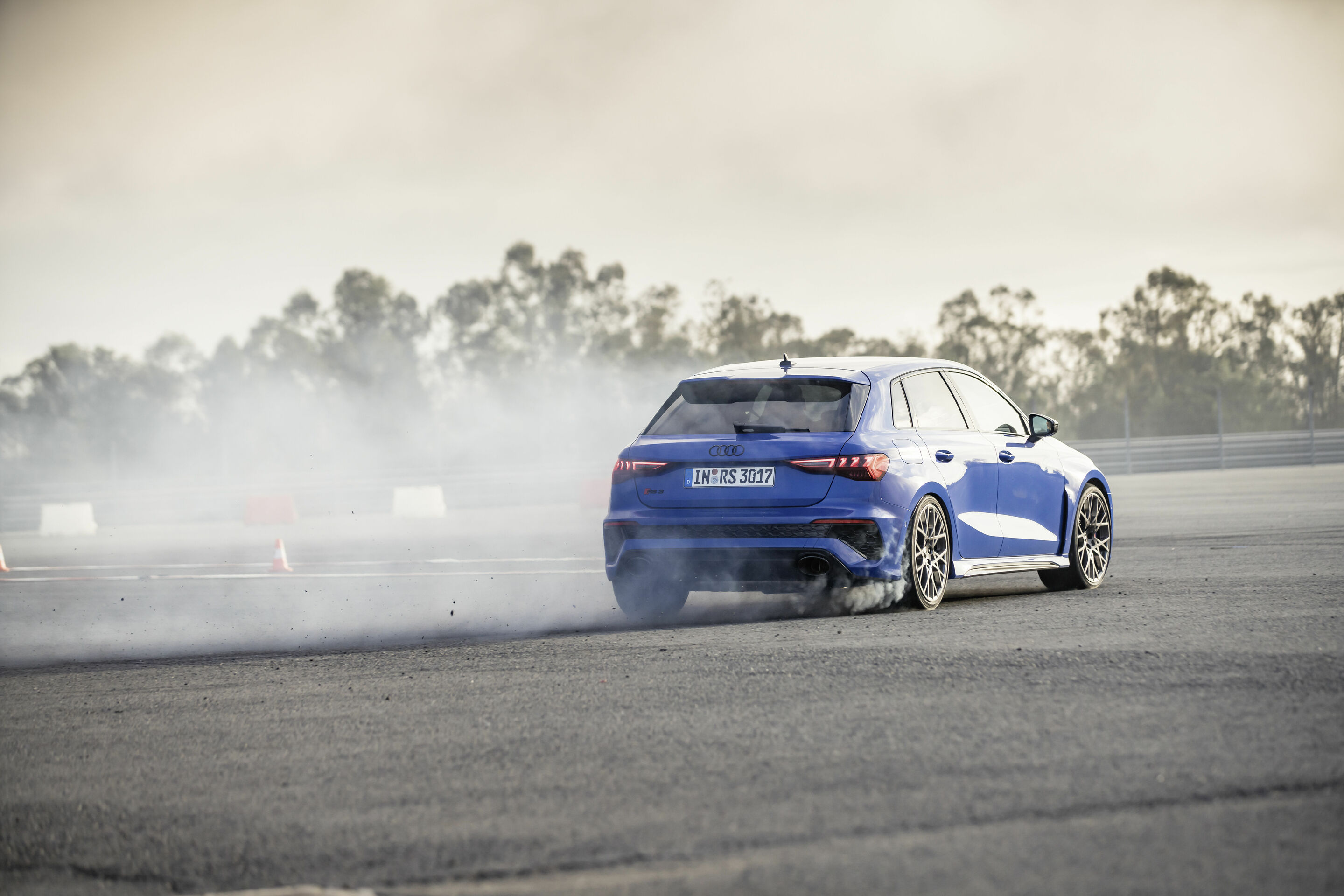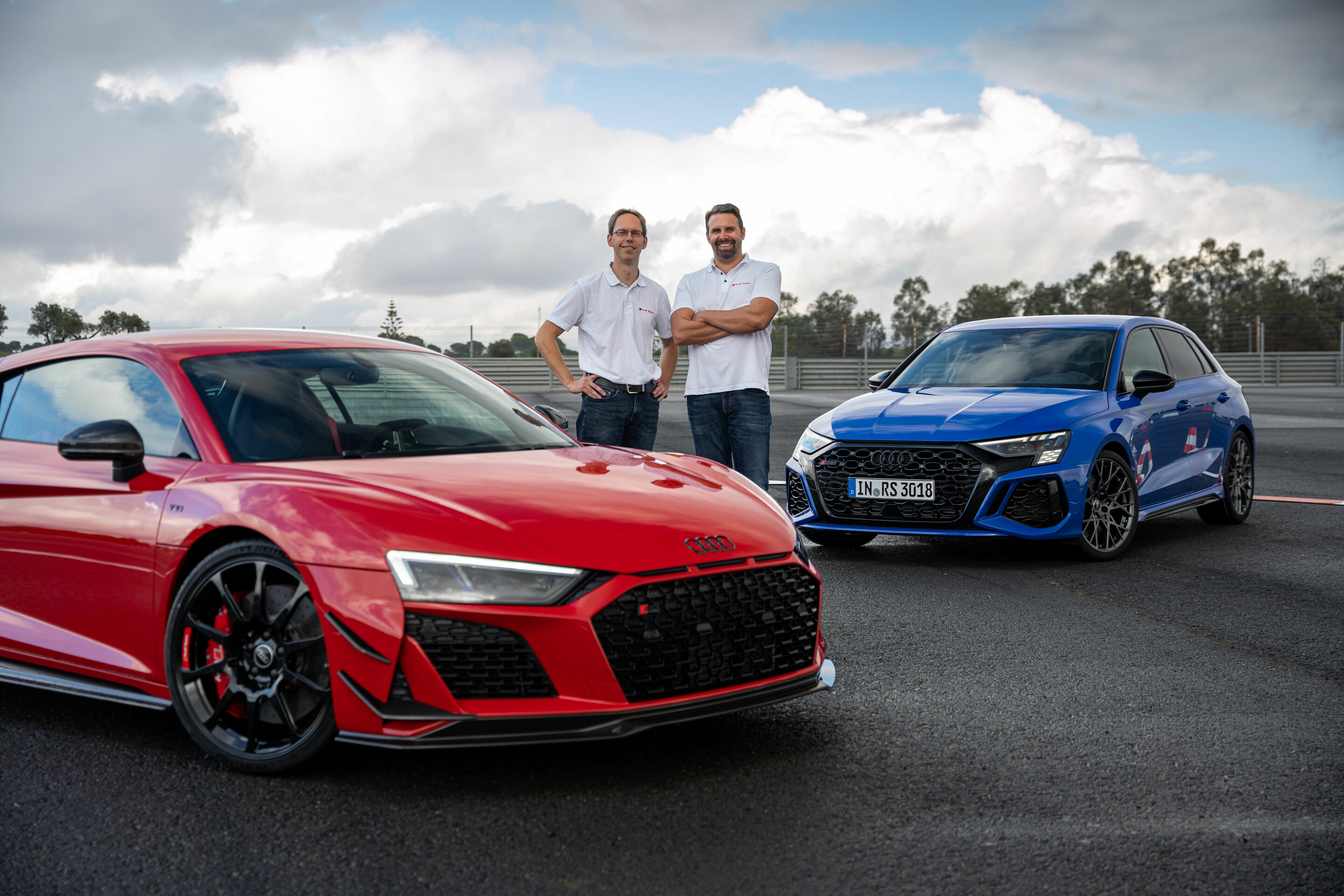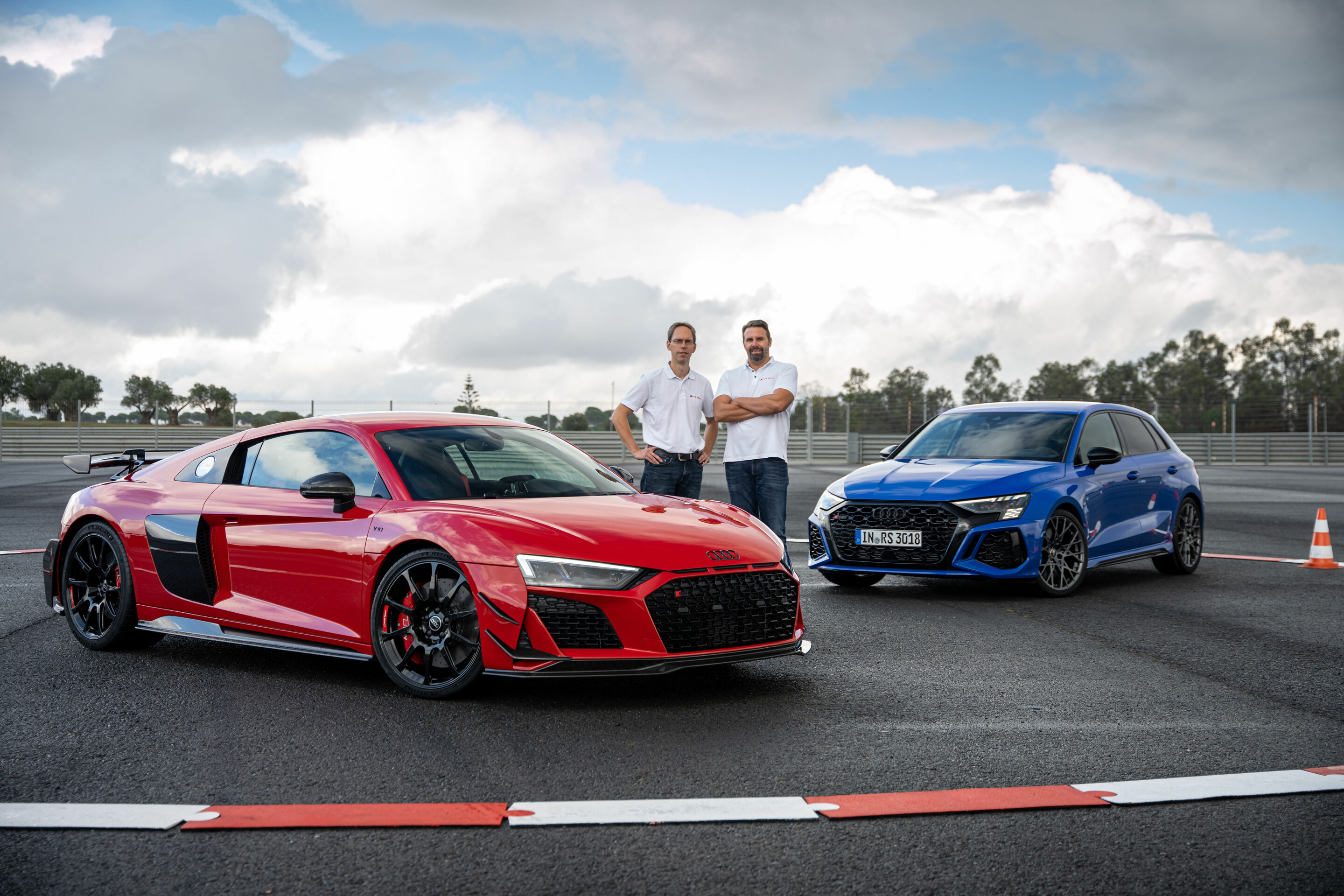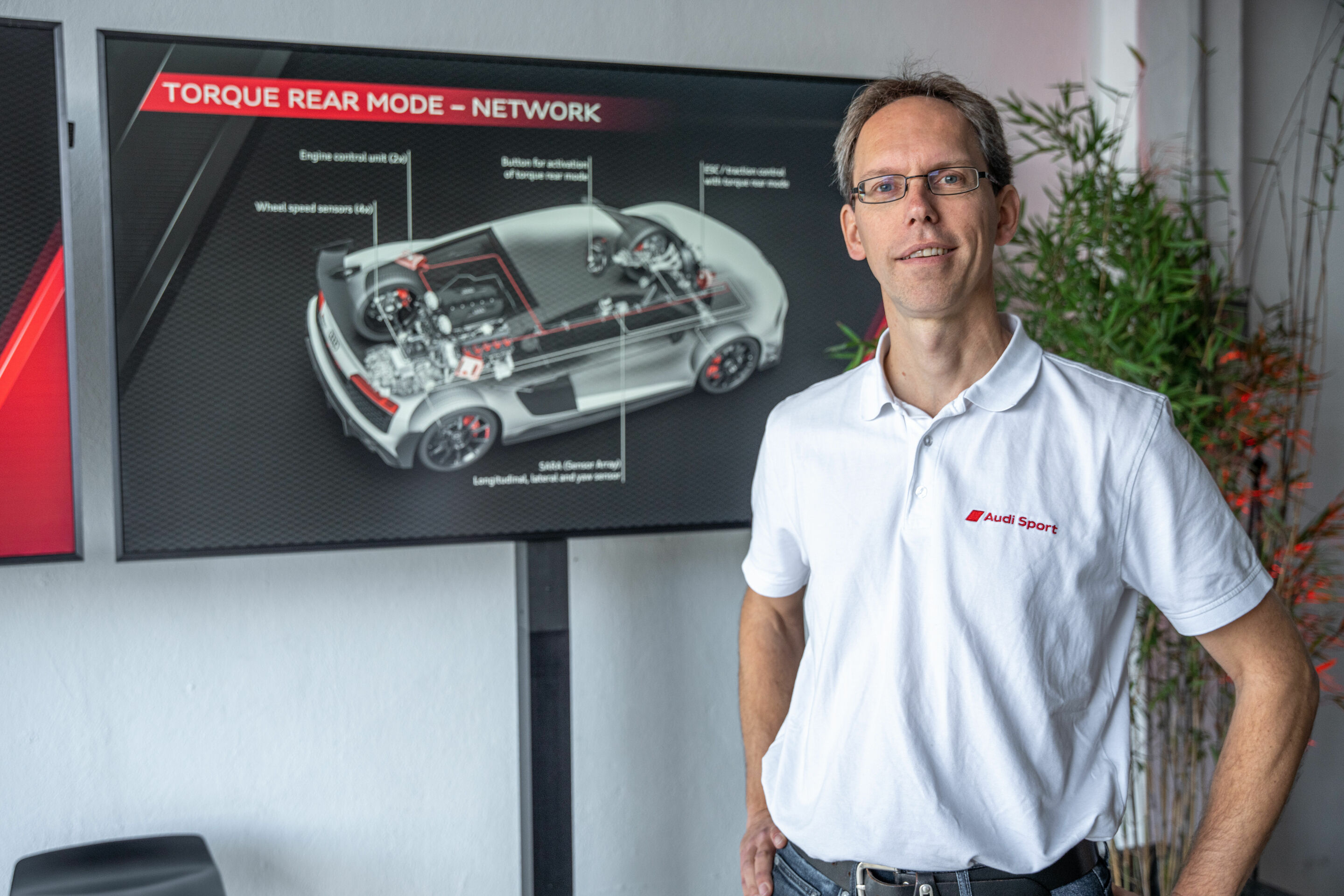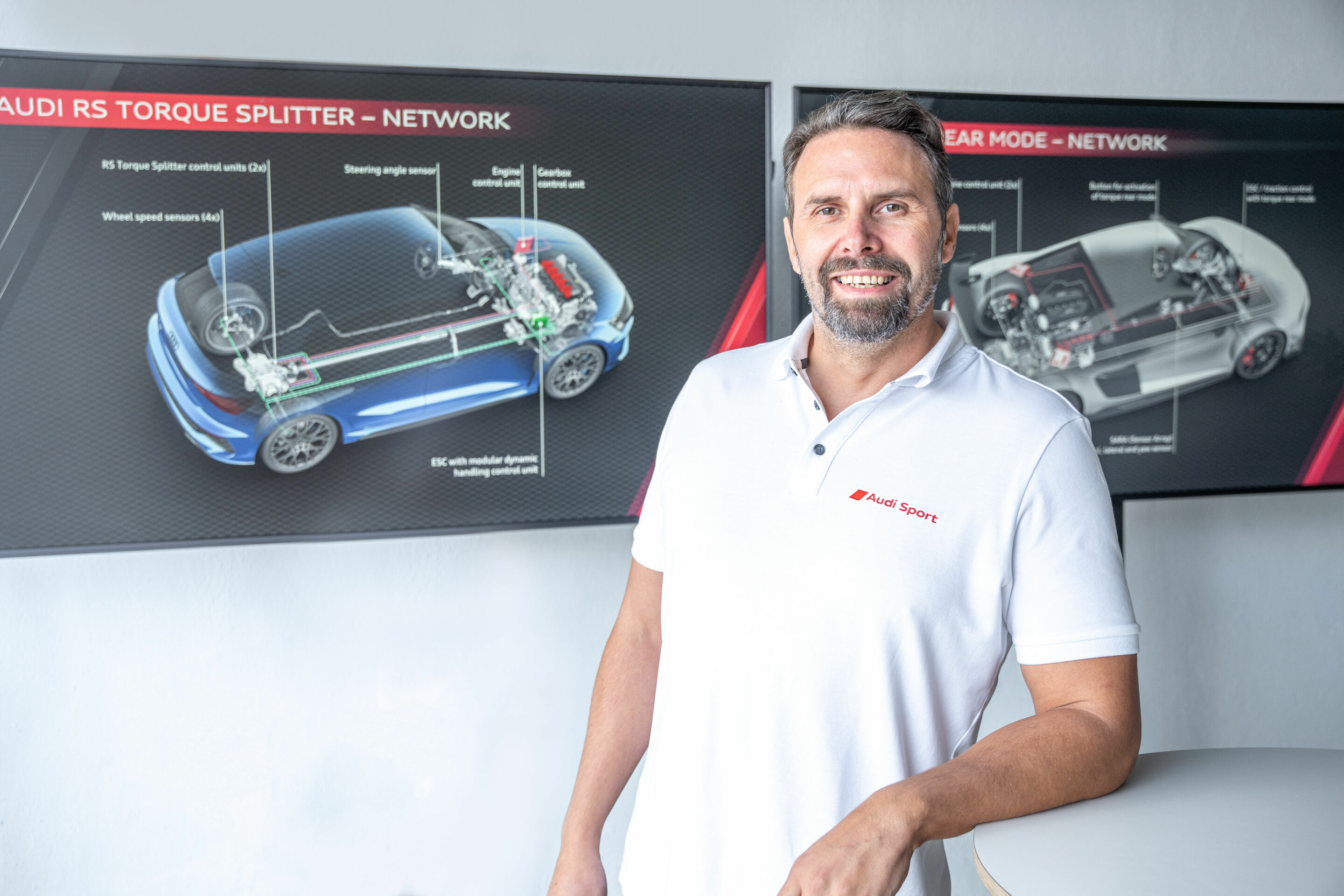Getting the Hang of It:
Drifting with Torque Rear in All-Wheel and Rear Wheel Drive
Two completely different vehicle concepts, one result: driving fun at the highest level. Both the R8 Coupé V10 GT RWD and the RS 3 performance edition offer the potential for drifting thanks to special modes. While the V10 engine in the high-performance R8 sports car only powers the rear wheels, the five-cylinder engine in the compact RS 3 sends its power to all four wheels thanks to a quattro system. In this interview, Audi Sport chassis developers Meic Diessner and Roland Waschkau explain how both cars get into the perfect slide.
What are the fundamental differences between the drive concepts of the two vehicles?
Meic Diessner: The RS 3 performance edition uses a quattro system with the RS torque splitter. It actively regulates torque depending on the given driving situation and the chosen Audi drive select mode. The two multi-plate clutches in the torque splitter variably distribute 50% of the driving power – the maximum available to the rear axle – between the two rear wheels. The result is more agile handling and increased lateral dynamics. As in the standard model, the RS-specific higher rate stabilizer, which is tuned to the torque splitter, and stiffer uprights also play their part.
Roland Waschkau: As the abbreviation RWD suggests, the R8 Coupé V10 GT RWD is a purely rear-wheel drive vehicle. It uses a chassis set-up that was specifically designed for rear-wheel drive. The stabilizers on the rear axle are softer for more grip on the racetrack. Since the R8 performance RWD forms the basis, we also carry over the increased camber on the rear axle compared to the R8 with quattro drive. Just like the locking center differential normally used in our supercar, this has advantages in terms of driving dynamics.
How is a drift performed in the RS 3 performance edition and the R8 Coupé V10 GT RWD?
Meic Diessner: In both models, drifting is generally initiated by slip on the rear axle. In the RS 3 performance edition, this happens when the torque splitter completely transfers the engine power that has been sent to the rear to the outside wheel. This generates a strongly oversteering condition and thus a drift. To do this, RS Torque Rear mode must be selected in the Audi drive select, and the Electronic Stability Control (ESC) must be deactivated. This is the only way to ensure the greatest possible slip.
Each of the two clutches in the rear differential has its own control unit. They not only communicate with each other, but also evaluate data from the wheel speed sensors as well as the longitudinal and lateral acceleration of the vehicle. The steering angle, accelerator pedal position, and selected gear also influence the degree of oversteer.
Roland Waschkau: In the R8 Coupé V10 GT RWD, slip on the rear axle is controlled by the traction control system. It is part of the ESC. Seven characteristic curves are stored in the traction control system, offering different levels of ESC support. Level 1 allows little slip, while level 7 allows a lot of slip. In the Audi drive select, there is a new mode that, as in the RS 3 performance edition, is called Torque Rear. It causes controlled oversteer. The desired torque rear level can be set by turning the control satellite on the steering wheel. Depending on the setting and taking into account information from wheel speed sensors, steering angle, accelerator pedal position, and the selected gear, the engine control unit controls, how much power is sent to the rear axle. In principle, the influencing parameters are identical to the RS 3 performance edition. Only the stepped adjustment of the ESC support has been added. This function also enables incremental adaptation as driving skills develop.
Does this mean that drifting is more difficult in the R8 V10 GT RWD?
Roland Waschkau: Let’s put it this way: the challenges of drifting in the R8 Coupé V10 GT RWD are completely different. Although the sportscar’s rear-wheel drive makes it easier to oversteer, its mid-engine concept makes it more challenging to hold the drift because it rotates faster. It requires the driver’s full attention to control the drift. Important: you can’t use the accelerator too much and you have to steer with feel.
Meic Diessner: In contrast to the R8 Coupé V10 GT RWD, the front wheels of the RS 3 performance edition are always driven. This means that you first have to create slip on the front axle for the vehicle to rotate at all. This can be done by accelerating more. In direct comparison with the R8 Coupé V10 GT RWD, is more difficult to induce oversteer in the RS 3 performance edition and position the car, but easier to hold the drift.
What was the purpose of the drift modes?
Meic Diessner: Quite simple: to have fun! Although the initial intention for the RS torque splitter was not the drift mode. The major advantage of the system is increased agility and less understeer during dynamic cornering. Moreover, it gives the vehicle more stability, especially in wet conditions. RS Torque Rear mode is basically a nice addition.
Roland Waschkau: That also applies to the R8 Coupé V10 GT RWD. Basically, the different vehicle segments alone create different premises for positioning the models: the RS 3 performance edition is the entry to the world of Audi Sport, while the R8 Coupé V10 GT RWD is the top model – a compact sports car suitable for everyday use on the one hand, and a high-performance sports car on the other. What both have in common is dynamics and driving enjoyment at the highest level.
